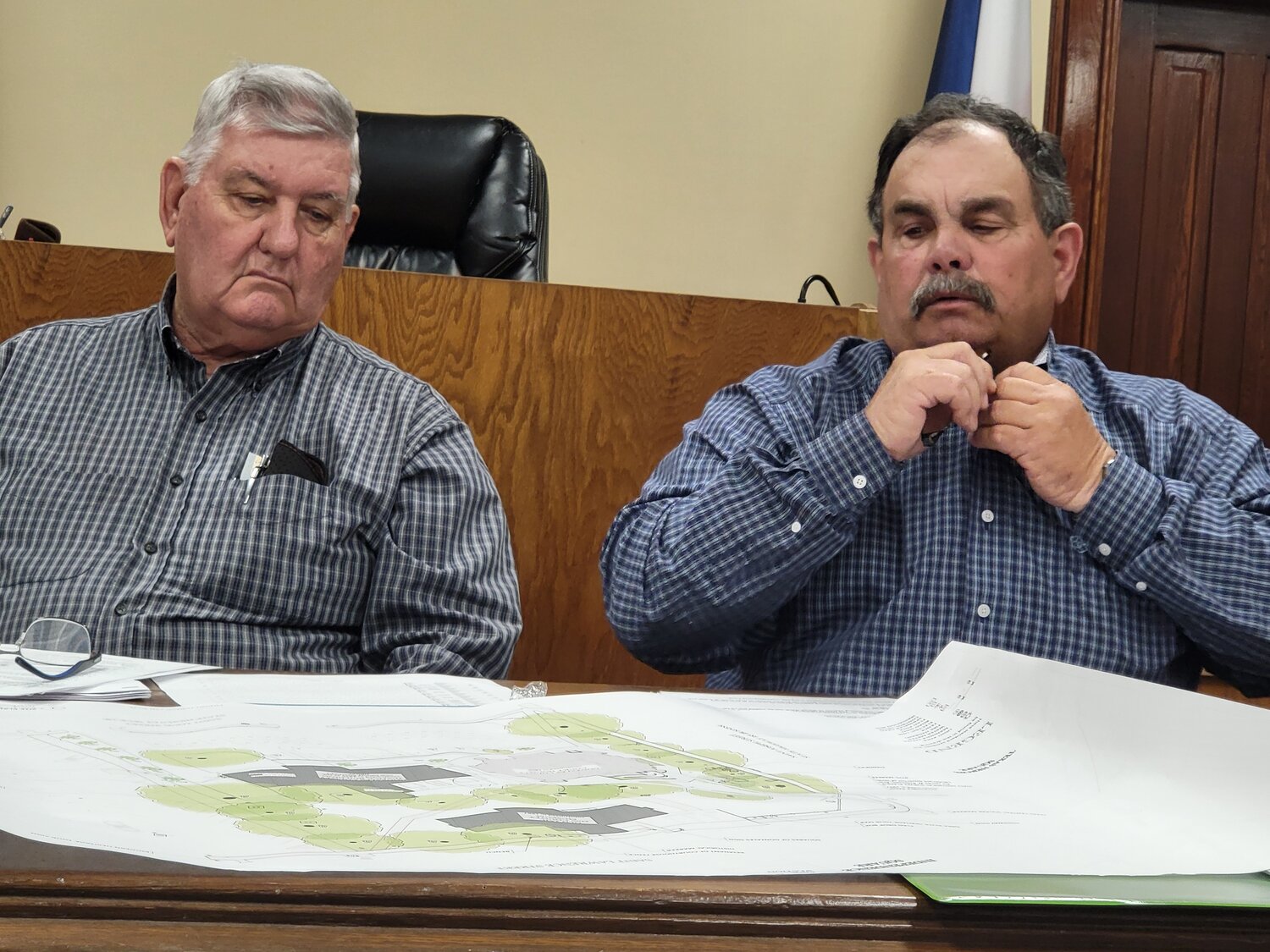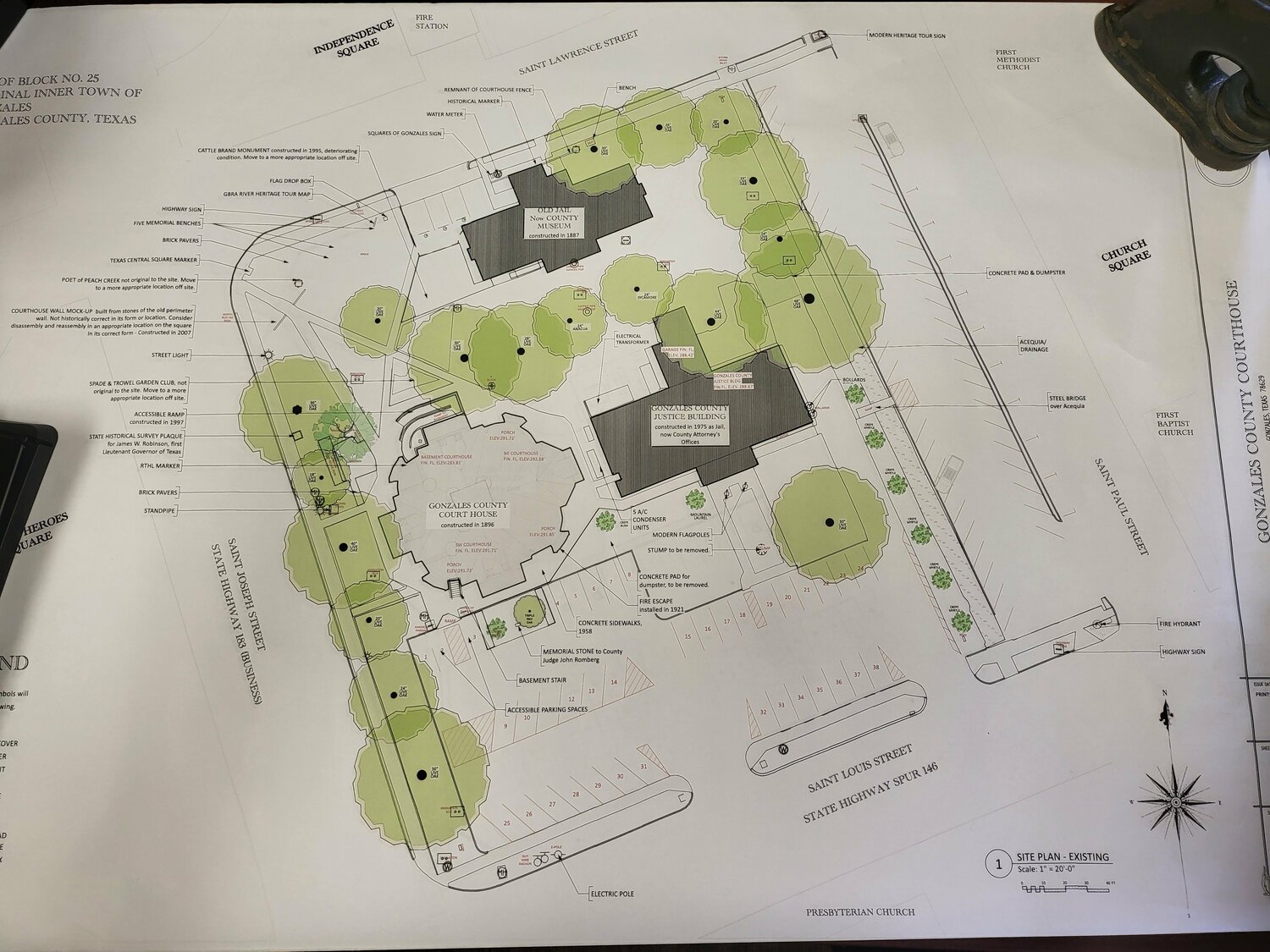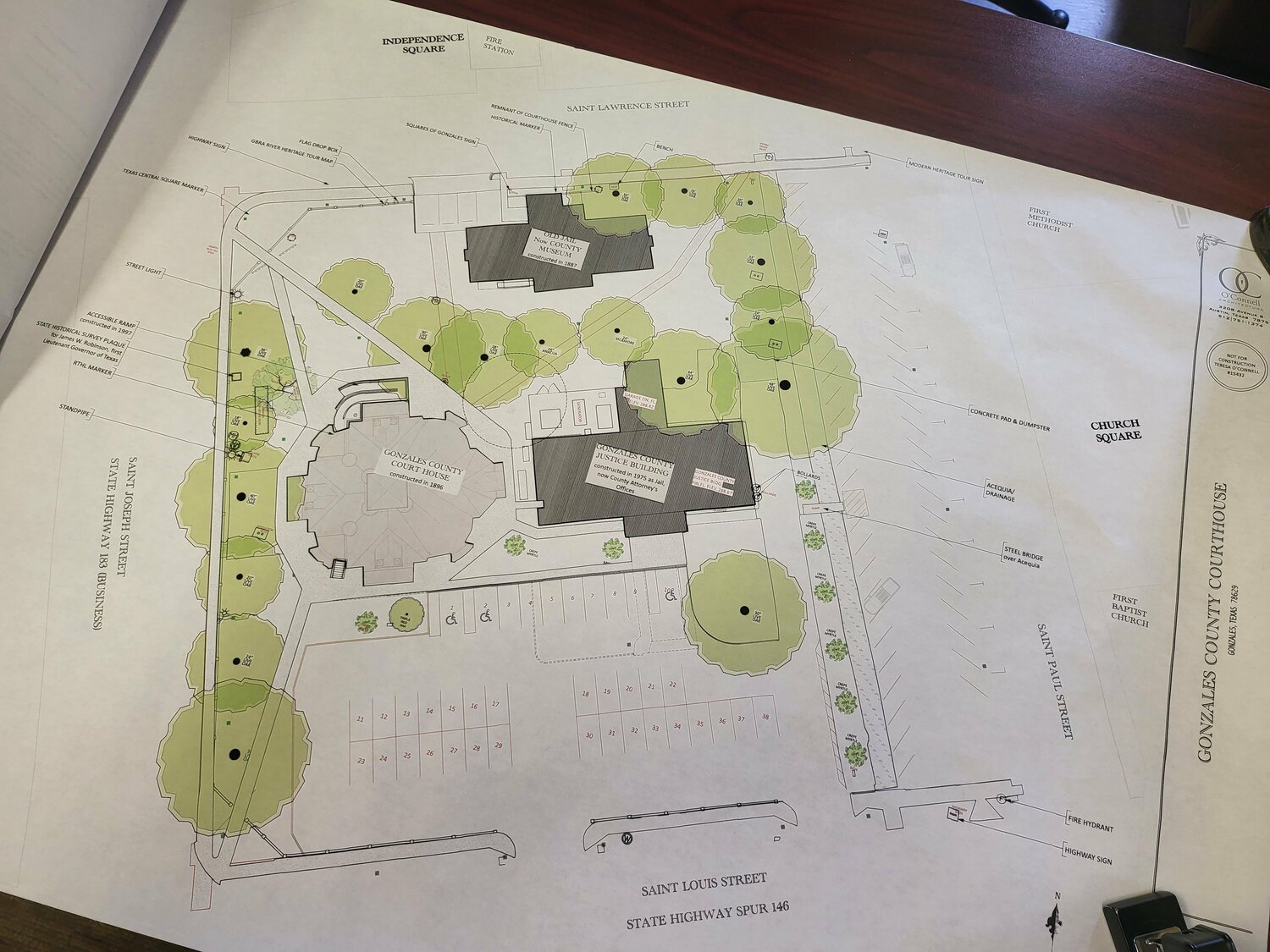County submits final grant application for Courthouse renovation project
Gonzales County submitted its grant application by the May 6 deadline to the Texas Historical Commission, seeking $10 million in funding under the Texas Historic Courthouse Preservation Program (THCPP) to restore the Gonzales County Courthouse.
Now the county will wait until July 26 to find out if their application will be chosen from among the 20 applicants seeking funding. There is a pool of just $45 million available in this grant cycle, so competition among counties is expected to be heated.
The county has pledged to commit $3.808 million of its own funding to the restoration project, well over the minimum 15 percent the county is required to put up to qualify for a grant. The total cost of the project is expected to be around $13.808 million.
Tere O’Connell of O’Connell Architecture LLC told commissioners during a special May 1 meeting that if the county does receive the full $10 million grant funding request, there are some changes that would have to be made to the parking lots at the Courthouse.
“The only real substantive comment (the THC) had of concern that needed some resolution was what to do about the parking lots,” O’Connell said. “(THC) would typically like to see all parking removed from the courthouse grounds, but we were able, through a long conversation with the Texas Historical Commission a little over a week ago, to talk about the history of how there has been parking on the side of the courthouse since there were cars. Their concern is that cars detract from the historic beauty of the Courthouse.”
The THC is recommending the county reconfigure the parking lot to remove the parking in front of the door by the county judge’s office.
The lawn in front of the Justice Building would be taken out to make it even with the curb along the Courthouse and allow the county to still have 38 designated parking spaces in the south lot off Saint Louis Street, including two handicapped-accessible spots by the commissioners’ court entrance and one in front of the Justice Building. The county will perform that work themselves so it will not be part of the costs associated with the grant.
THC also would like to see courthouse perimeter fencing restored, which would help provide a “good screen” of the adjacent parking lot, O’Connell said.
“They are not asking you to remove the Justice Building, which is not an historic structure obviously,” O’Connell said. “I think that's a very practical approach for them to not recommend removal of that, so that works in your favor. A lot of other counties have been asked to remove new construction.
Asked if the county could leave the parking as is, O’Connell said the THC has in its scoring system an item called “fix inappropriate changes.” Failure to address that would result in a loss of points in that particular category, but she believes making the changes as suggested would result in the county receiving all points available to score in that category.
The master plan compiled for the county by O’Connell — at a cost of $219,000 — has been formally approved by the THC and is “a very comprehensive document, as you can imagine … to qualify you for the grant program.”
“This is a very detailed plan that I hope that you all will have some time to look through at some point,” O’Connell said. “We've got an incredible historical account of Gonzales County, not just the Courthouse, but of Gonzales County and Gonzales city because it is so important to Texas history. And we wanted to make sure that everyone understands the historic value, not only of the courthouse, but of Gonzales as a community.
“We met all the THC requirements for the historic records that needed to be provided, the historic floor plans of the building, tied in with historic photographs. We've got detailed rehabilitation recommendations for the site, and for the building itself — architecturally, structurally, mechanical, electrical, plumbing, and waterproofing.”
O’Connell said the master plan includes a “code analysis and life safety analysis for life safety and building accessibility,” in which the Courthouse scored well.
“There were obviously mechanical system issues that need to be addressed and masonry issues around the building envelope that need to be addressed,” O’Connell said. “There is water infiltration that's coming from the roof, likely damage from Hurricane Harvey, and water coming in through the foundation. As you know by now, you're now in the FEMA flood zone, a special hazard flood zone, so water infiltration coming into the basement is part of all of that.”
Recommendations for improvement to the courthouse include removing the paint coating that is on the Courthouse masonry.
“That paint coating thathas been on the masonry for a long time is eroding the stone behind the paint finish and it's holding water against the building, and it's slowly eroding the stone underneath it,” O’Connell said. “One of the very important scopes of work we want to accomplish as part of this restoration program is to remove those coatings and let the masonry breathe again.”
Another recommendation is to replace the existing clay tile roof, which was put on the building in 1957, with a slate roof to make it more historically accurate with the original Romanesque Revival theme of the building as designed by famed architect J. Riely Gordon.
The perimeter of the Courthouse will be excavated and sidewalks removed to repair masonry that is below grade and to put in a subgrade water proof system to help get water away from the foundation perimeter. Roof drains will move water to that subgrade drainage as well so it will not be pooling against the building anymore.
Window air units will be removed by county employees so they can be replaced by a central HVAC system with equipment both in the attic and basement of the courthouse.
O’Connell said even if the county is approved for the grant, it would be at least a year before any construction would begin on the building.
“You'll have some time,” she said. “It would be wise to let us go ahead and start developing plans and specifications at that point (to get the project shovel ready). The construction on the restoration, we most likely wouldn’t start for another year.”
O’Connell said the project includes a 12 percent contingency “for anything unforeseen at this point, which is a lot of money to cover change orders made during construction or unforeseen circumstances.”
If the county is able to get the work done with a minimal amount of change orders and without needing to use that much contingency, those funds would go back to the county and reduce the county’s portion of the project.
Comments












